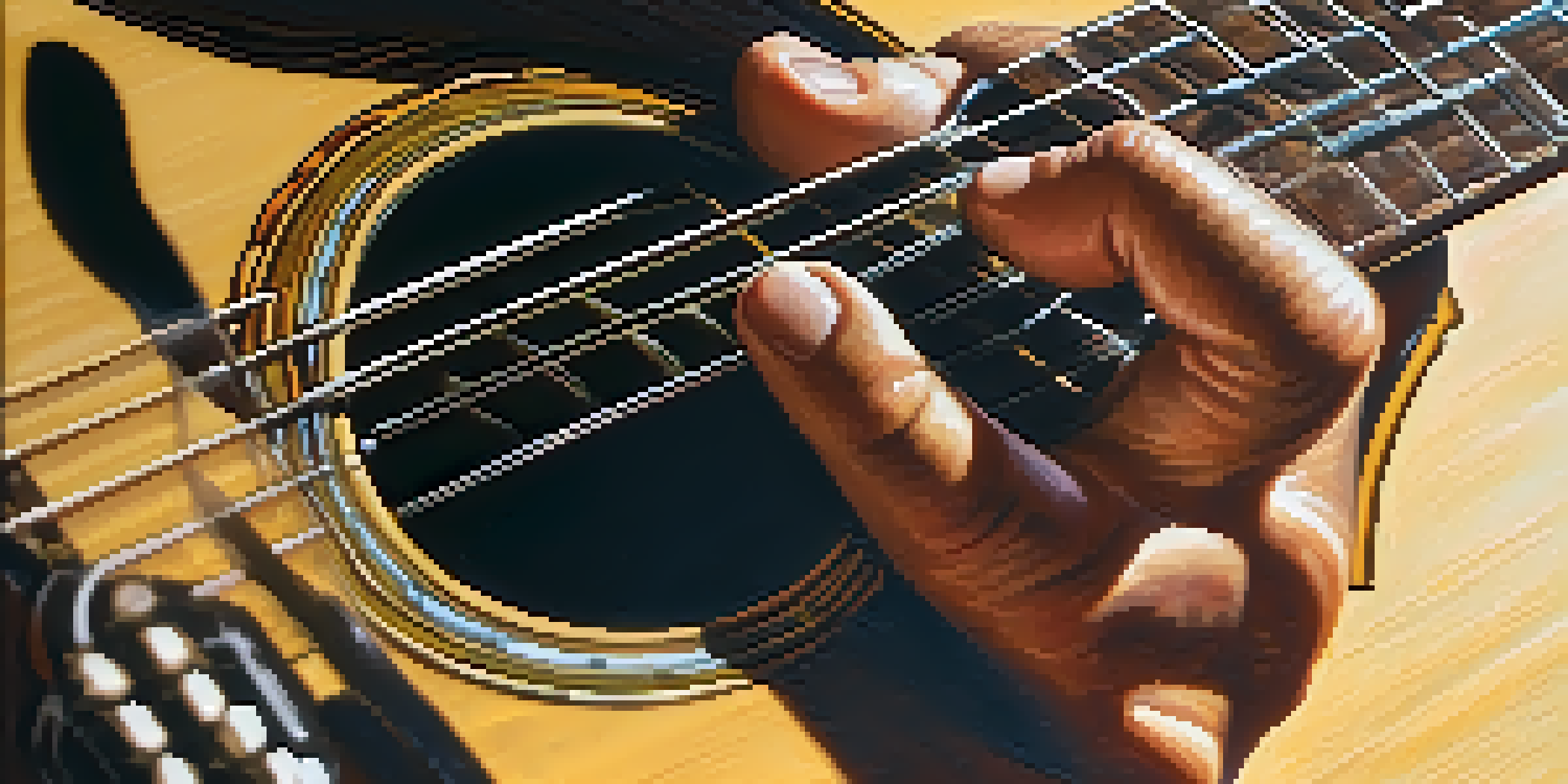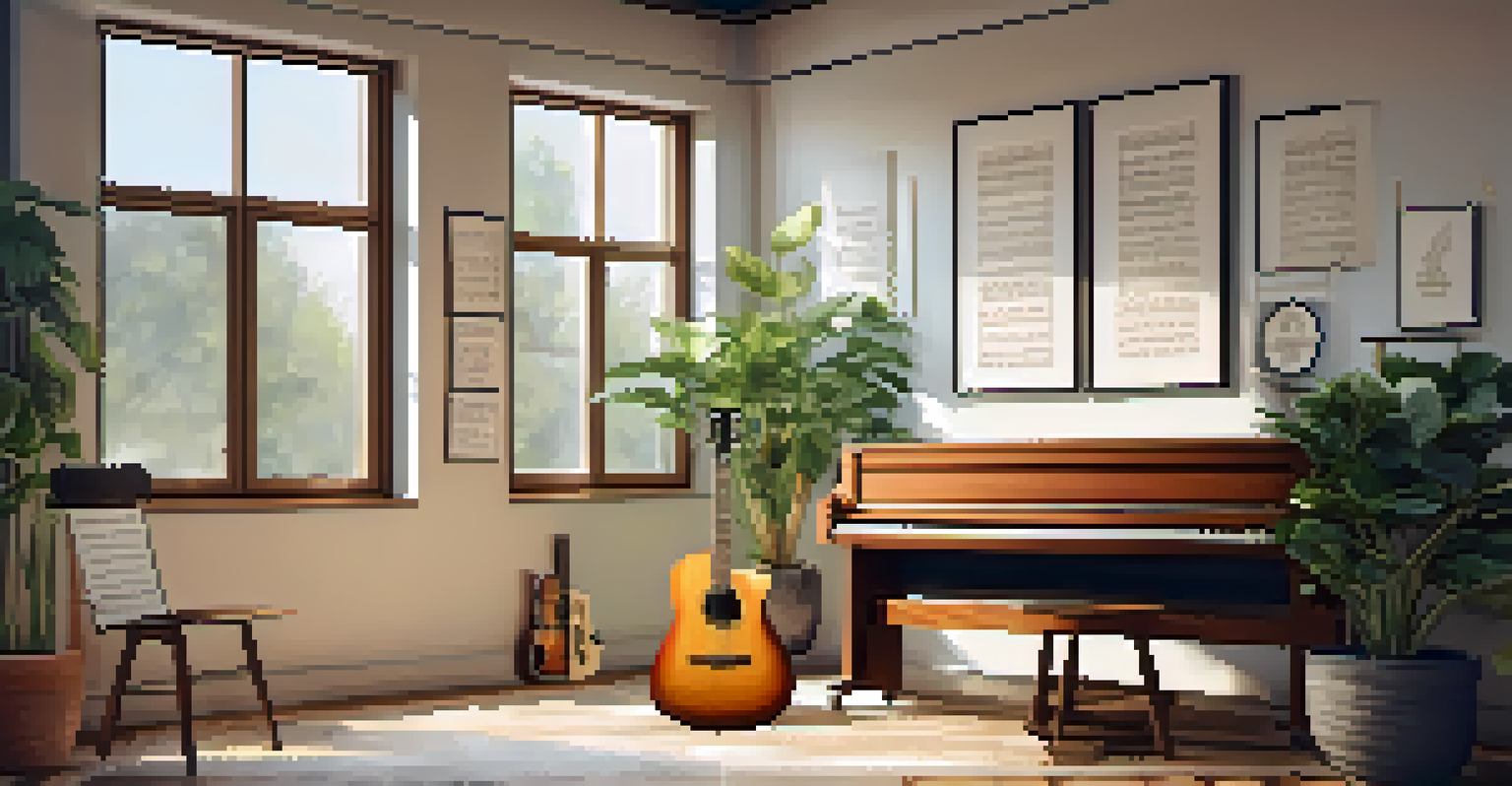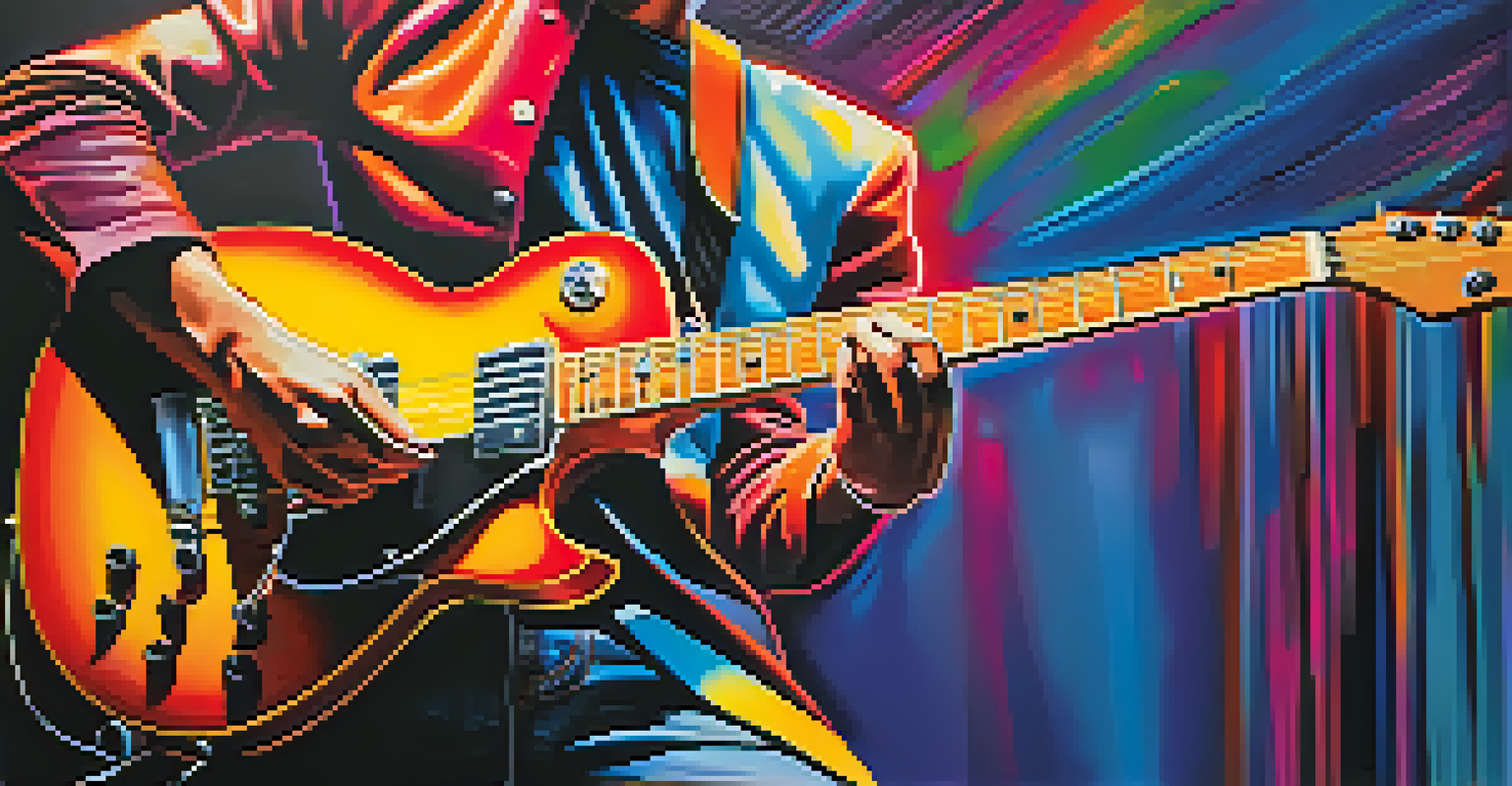Understanding Barre Chords: A Guide for Intermediate Players

What Are Barre Chords and Why Use Them?
Barre chords are a type of guitar chord where one finger presses down multiple strings across the fretboard. This technique allows you to create various shapes and play different chords using the same finger position. For many intermediate players, mastering barre chords opens up a world of possibilities in songwriting and improvisation.
The guitar is a miniature orchestra in itself.
Think of barre chords as a way to unlock a new level in your guitar playing. Instead of being limited to open chords, you can now play anywhere on the neck, adding depth and versatility to your music. This means you can play the same chord in various locations, which can really enhance your sound.
While they can be challenging at first, the effort you put into learning barre chords will pay off. You'll find that they are essential for playing many songs across different genres, making your practice sessions more rewarding and exciting.
The Anatomy of a Barre Chord
A barre chord typically involves using your index finger to press down all the strings on a particular fret, creating a 'bar' effect. This allows the other fingers to form different chord shapes above the barred fret. For example, if you bar the 5th fret and form an 'E' shape, you’re playing an A chord.

Understanding the anatomy of barre chords is crucial. The index finger acts as a capo, enabling you to play chord shapes that would otherwise require open strings. This concept is similar to playing a power chord, where the root note and fifth are emphasized to create a fuller sound.
Unlock Versatility with Barre Chords
Mastering barre chords expands your chord options and allows you to play anywhere on the neck, enhancing your musical depth.
As you get comfortable with barre chords, try experimenting with different finger placements and shapes. Each variation can produce a unique sound, adding richness to your playing style and expanding your musical repertoire.
Common Barre Chord Shapes to Master
There are several common barre chord shapes that every intermediate player should know, including major, minor, and seventh chords. The most basic shapes are based on the open E and A chord shapes. For instance, moving your E shape up the neck allows you to play different major chords.
The beautiful thing about learning is that no one can take it away from you.
Another essential shape is the minor chord, which you can form by altering the E shape slightly. This simple adjustment can have a big impact on your sound, allowing you to convey different emotions through your music. Don’t forget about the seventh chords, which can add tension and interest to your progressions.
Practicing these shapes in various positions on the neck will help solidify your understanding. Remember, the more you practice switching between these shapes, the smoother your transitions will become, making your playing sound more professional.
Tips for Building Strength and Endurance
Building the strength and endurance needed for barre chords takes time and practice. Start by dedicating a few minutes of your practice session to barre chord exercises, focusing on accuracy and clarity. It's better to play slowly and correctly than to rush and develop bad habits.
You can also incorporate finger exercises that target your index finger and the muscles in your hand. One effective exercise is to press down on each string individually while maintaining the barre with your index finger. This will help you build the necessary muscles for consistent playing.
Build Strength for Better Playing
Dedicating time to strengthen your fingers and practicing barre chord exercises will improve your overall technique and endurance.
As you progress, gradually increase the duration of your barre chord practice. Over time, you’ll notice improvements not just in strength, but in your overall playing technique, allowing you to tackle more complex songs with confidence.
Common Challenges and How to Overcome Them
Many intermediate players face challenges when learning barre chords, such as finger fatigue or difficulty achieving a clean sound. If you find your fingers getting tired quickly, it may be a sign that you need to work on your technique and finger placement. Ensure that your thumb is positioned correctly behind the neck for optimal support.
Another common issue is muting unwanted strings. If you hear buzzing or muffled notes, check to make sure that your barre finger is pressing down evenly across all strings. Experimenting with slight adjustments in finger pressure or angle can make a significant difference.
Don’t get discouraged if you struggle initially; every guitarist faces hurdles. Consistent practice and a focus on technique will help you overcome these challenges, paving the way for greater success.
Incorporating Barre Chords into Your Playing
Once you've got a handle on barre chords, it’s time to incorporate them into your songs and improvisation. Start by replacing open chords in your favorite songs with barre versions. This will not only enhance your sound but also help you become more comfortable using them in different contexts.
Another fun way to practice is to create your own chord progressions using barre chords. Try mixing major and minor shapes or adding seventh chords for variety. This creative approach can inspire new songwriting ideas and keep your practice sessions fresh.
Incorporate into Your Music
Using barre chords in your songs and improvisation can enhance your sound and inspire new creative ideas.
Additionally, jam along with backing tracks or play with other musicians. This real-world application can boost your confidence and give you the opportunity to experiment with barre chords in a musical setting.
The Path Forward: Next Steps in Your Guitar Journey
Mastering barre chords is a significant milestone on your guitar journey, but it's just the beginning. As you become more proficient, consider exploring advanced techniques like fingerpicking or hybrid picking, which can add a new dimension to your playing. These techniques often pair beautifully with barre chords, creating intricate and captivating sounds.
Joining a community, whether online or in-person, can also provide motivation and inspiration. Sharing your progress with others can lead to valuable feedback and new ideas, enhancing your growth as a musician.

Remember, every guitarist has their unique path. Embrace the challenges, celebrate your victories, and continue pushing your boundaries. With dedication and practice, you’ll unlock even more potential in your playing.